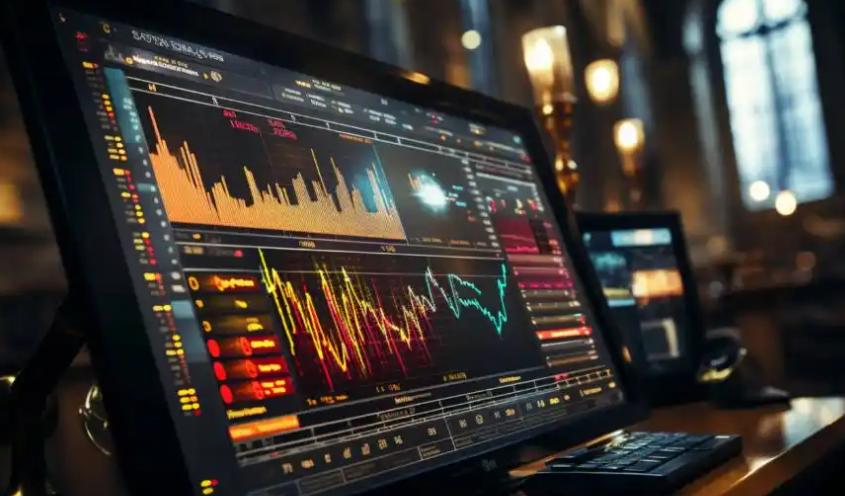
Today, the three major US stock indices collectively closed higher, with the Nasdaq China Golden Dragon Index leading the way with a 3.21% increase, technology stocks such as Tesla and Broadcom rising over 4%, and the S&P 500 index rising 1.56%, showing a long lost strong rebound trend. This performance not only reflects the market's optimistic expectations for the Federal Reserve's monetary policy shift, but also exposes new characteristics and potential risks of global capital flows.
The interest rate cut signal released by the minutes of the Federal Reserve's September meeting is the core driving force behind this round of rebound. The minutes show that officials generally agreed to start reducing the balance sheet in November or December, with a 98.3% probability of a 25 basis point interest rate cut in October. The dovish remarks of New York Fed President Williams further strengthened the market's expectations of a loose interest rate path. Historical experience has shown that when the Federal Reserve shifts from tightening to easing, equity assets often face valuation repair opportunities. Taking technology stocks as an example, high growth targets such as Tesla and Broadcom usually perform outstandingly during interest rate cutting cycles due to their high sensitivity to interest rates. In this rebound, the outstanding performance of the Nasdaq China Golden Dragon Index resonates with the logic of foreign capital accelerating the allocation of Chinese assets - Goldman Sachs and Morgan Stanley's net inflow of Chinese assets in September reached $4.6 billion, reflecting the global capital's repricing of emerging market risk assets.
Despite the impressive performance of the stock market, there are hidden concerns in the fundamental data. The monthly retail sales rate in September in the United States recorded 0%, lower than the expected value of 0.2%. The reality of four consecutive months of decline contradicts the data that core retail sales increased by 6.6% year-on-year and core CPI growth was consistent. This combination of "weak consumption but high prices" reveals the erosion of high inflation on residents' actual purchasing power. More noteworthy is that the PPI annual rate is expected to reach 8.3% in September, and the soaring energy prices and supply chain bottlenecks may continue to push up production costs. If inflationary pressures cannot be effectively alleviated, the Federal Reserve may face a difficult balance between "maintaining growth" and "controlling inflation", which could affect the coherence of monetary policy.
In this round of rebound, precious metal prices hit a historic high - gold broke through $4100/ounce, silver broke through $52/ounce, and the London market experienced short squeeze. On the one hand, this reflects the demand for safe haven caused by geopolitical risks (such as the confrontation of port fees between China and the United States), and on the other hand, it also implies market concerns about currency depreciation and inflation. Against the backdrop of escalating trade frictions between China and the United States, the United States' measures to impose high port fees on Chinese ships have caused a global shock in the shipping industry. 70% of the containers at the Port of Los Angeles rely on Chinese fleets, and the reality of a 15% increase in freight rates not only impacts the stability of the supply chain, but may also affect terminal consumer prices through cost transmission, creating "input inflation" pressure.
The strong rebound of the US stock market today is not only the result of the resonance between the expectation of interest rate cuts and capital flows, but also reflects the complex game of the global economy under the triple pressure of "inflation growth geopolitics". Investors should not only see the valuation repair opportunities brought by loose monetary policy, but also have a clear understanding of the contradictions and potential risks of fundamental data. Capturing structural opportunities in dynamic equilibrium and maintaining an open perspective in caution may be the best strategy to address the current market. After all, in the long river of financial markets, there is no eternal rise or fall. Only by respecting logic and risk can we achieve stability and long-term success.

Below is the English translation of the text, with precise handling of political terms, consistent sentence structures, and preservation of the original’s analytical tone and logical flow:
Below is the English translation of the text, with precise …
On December 15 local time, Trump took the British Broadcast…
In recent years, the application of artificial intelligence…
According to Yahoo US media reports, the recent remarks of …
After 11 years of waiting in the deep sea, we finally have …
On December 17, 2025, the newly renovated American "Preside…